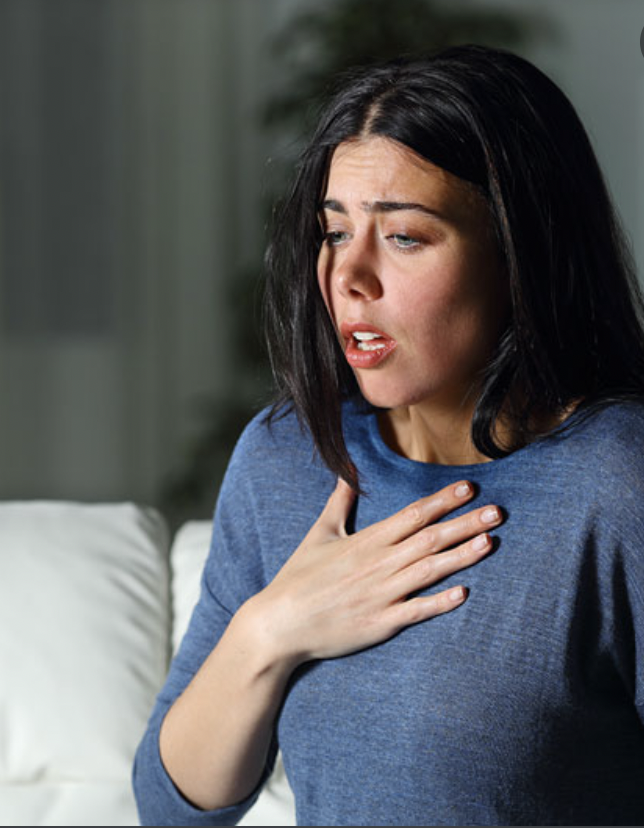PANIC BEHAVIOR AND HYSTERIA DURING PANDEMIC
As the coronavirus is spreading around the world, it is impacting mental health in many ways. One of them is causing panic behaviour and hysteria among people. The constant fear of getting infection, protecting oneself from the virus and also unavailability of vaccine has increased panic behaviour among people. And somehow people feel that they have developed symptoms, even if they didn’t and start panicking. This is Hysteria. Let’s look at them in detail.
Hysteria is known as a constellation of physical symptoms indicating some illness without an identifiable cause. During a pandemic, beliefs related to having symptoms and illness begin and as they spread among people, it can lead to Mass Hysteria.
Mass hysteria is also called epidemic hysteria as it occurs between two or more people who share beliefs related to symptoms suggestive of organic illness. An important causal factor that creates hysteria around pandemics is that the population's ability to remain calm and react logically to the situation at hand is hindered and unfocused due to the anxiety and fear of uncertainty felt by large groups of people. "Outbreaks of multiple unexplained symptoms" is a fairly neutral phrase to describe the phenomenon referred to by more pejorative phrases such as "mass hysteria" and "mass psychogenic illness." During mass hysterias, the human mind goes on a witch hunts for information that fits the narrative.
Even if a person is not ill, after seeing the symptoms and illness of other people during pandemic, the person starts developing physical symptoms in the absence of real illness. In terms of Freud’s Psychoanalytic theory, it can be described as a way of dealing with the anxiety and emotional excess during pandemic. It is emotionally charged behaviour that seems excessive and out of control.
During pandemic, if people are not able to confront the fears, it will result in mental problems like hysteria. People reflect anxiety and repression aroused by unconscious conflict covered into physical symptoms. People’s ego defense mechanisms against high level of fear and anxiety of developing illness during pandemic convert the distress from psychological to physical symptoms. These physical symptoms allow partial expression of forbidden fears and have a symbolic relation to the unconscious conflict (fear of becoming ill). So, by expressing these conflicts, anxiety is reduced to some extent, and is considered as primary gain or reinforcing event that maintains the attention and sympathy from the loved ones which helps in dealing with difficult or problematic situations.
As in today’s time, when every information is available on internet, the first thing which everyone does is to check the symptoms online. When they do so, they start relating to it and think that they exhibit those symptoms even if they are well and healthy. This all happens due to the anxiety arising from the spread of virus in pandemic. So, we can say that the physical symptoms do not have any biological cause but it definitely has a mental cause.
Also during pandemic, people became hoarders. They bought everything in bulk resulting in a lack in availability of resources which also triggered anxiety or panic among people. They feared that they won’t have any resources or goods in quarantine during pandemic.
The main symptoms of coronavirus are cold and fever, so, even if people get normal viral infection or just some minor cold, they start panicking and think that they have caught up coronavirus. Also, somehow this anxiety has been felt more because life has been affected in every aspect including personal, professional, emotional and social.
Panic is a sudden surge of intense fear that triggers severe physical reactions when without any real danger or apparent cause. Mass panic and self-preservation are natural responses to physical danger and perceived entrapment. Panic and it's associated symptoms are intensified by the population's physical or visual proximity to casualties, the general excitement of the event, the presence of media at the scene, the media reporting litigation and/or compensation, labelling of the illness with a specific diagnosis, and the persistence of rumors.
During pandemic, as people see the death toll, spreading rate of illness, absence of vaccine, etc. It makes them even more anxious about it. The most common symptoms of panic during pandemic are nausea, vomiting, headache, and dizziness or light-headedness, abdominal distress, weakness or fatigue, fainting or unconsciousness and hyperventilation.
There are many ways through which we can deal with the hysteria and panic. Like, meditation, interaction with loved ones or by developing an interesting hobby at home. People can also engage in activities to enhance self-esteem and to adopt strong mind-set so to deal with all anxiety and panic being aroused during pandemic.



